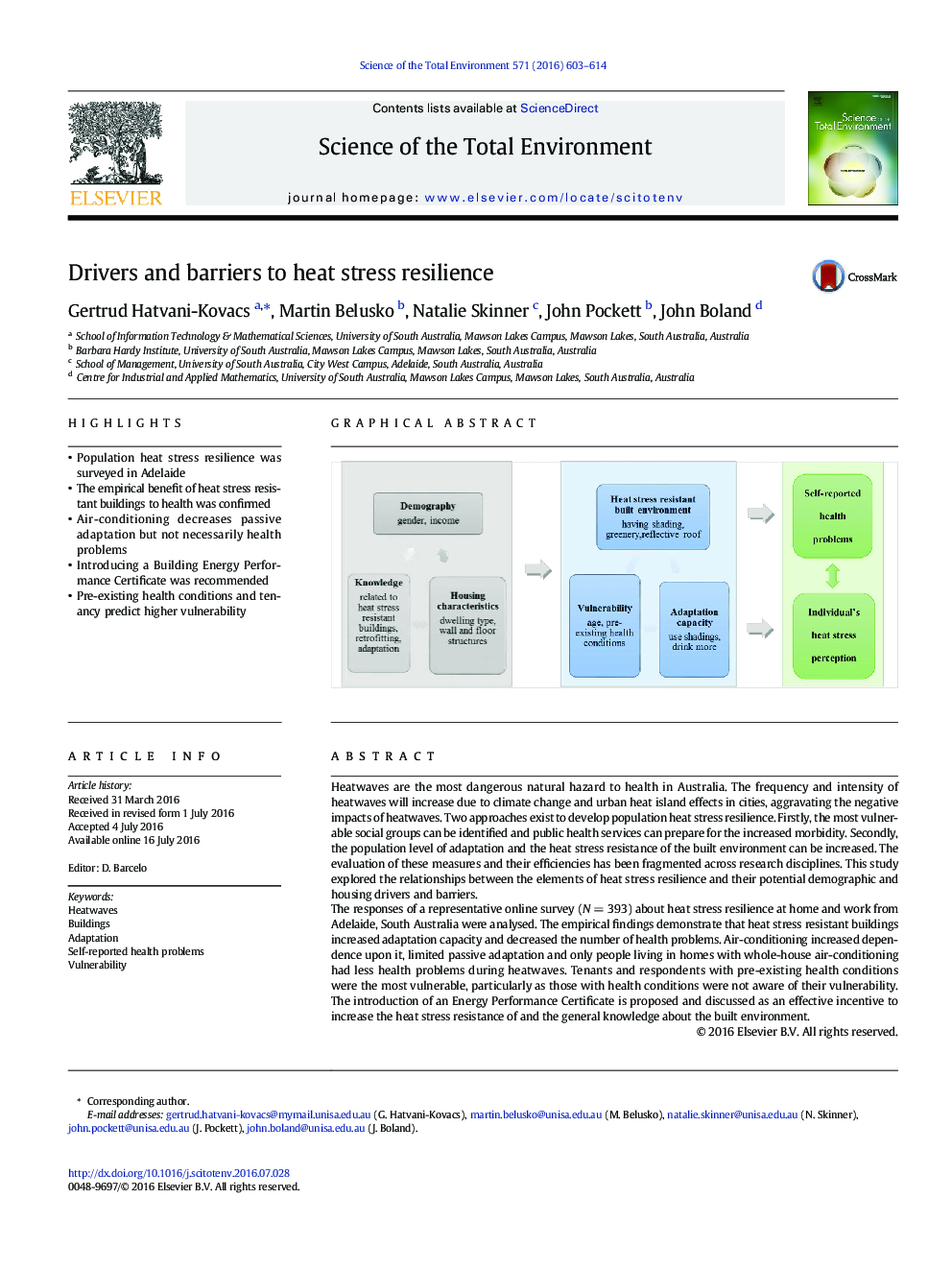| کد مقاله | کد نشریه | سال انتشار | مقاله انگلیسی | نسخه تمام متن |
|---|---|---|---|---|
| 6320457 | 1619720 | 2016 | 12 صفحه PDF | دانلود رایگان |
- Population heat stress resilience was surveyed in Adelaide
- The empirical benefit of heat stress resistant buildings to health was confirmed
- Air-conditioning decreases passive adaptation but not necessarily health problems
- Introducing a Building Energy Performance Certificate was recommended
- Pre-existing health conditions and tenancy predict higher vulnerability
Heatwaves are the most dangerous natural hazard to health in Australia. The frequency and intensity of heatwaves will increase due to climate change and urban heat island effects in cities, aggravating the negative impacts of heatwaves. Two approaches exist to develop population heat stress resilience. Firstly, the most vulnerable social groups can be identified and public health services can prepare for the increased morbidity. Secondly, the population level of adaptation and the heat stress resistance of the built environment can be increased. The evaluation of these measures and their efficiencies has been fragmented across research disciplines. This study explored the relationships between the elements of heat stress resilience and their potential demographic and housing drivers and barriers.The responses of a representative online survey (NÂ =Â 393) about heat stress resilience at home and work from Adelaide, South Australia were analysed. The empirical findings demonstrate that heat stress resistant buildings increased adaptation capacity and decreased the number of health problems. Air-conditioning increased dependence upon it, limited passive adaptation and only people living in homes with whole-house air-conditioning had less health problems during heatwaves. Tenants and respondents with pre-existing health conditions were the most vulnerable, particularly as those with health conditions were not aware of their vulnerability. The introduction of an Energy Performance Certificate is proposed and discussed as an effective incentive to increase the heat stress resistance of and the general knowledge about the built environment.
221
Journal: Science of The Total Environment - Volume 571, 15 November 2016, Pages 603-614
